Books by Armin Schmidt

EAC Guidelines for the use of Geophysics in Archaeology: Questions to Ask and Points to Consider. EAC Guidelines 2
See http://www.archprospection.org/eacguidelines
The aim of these guidelines is to provide an ... more See http://www.archprospection.org/eacguidelines
The aim of these guidelines is to provide an overview of the issues to be considered when undertaking or commissioning geophysical survey in archaeology. As every project differs in its requirements (e.g. from fi nding sites to creating detailed maps of individual structures) and variations in geological and environmental conditions lead to different geophysical responses, there is no single ‘best’ survey technique or methodology. This guide, in its European approach, highlights the various questions to be asked before a survey is undertaken. It does not provide recipe book advice on how to do a geophysical survey or a tick list of which technique is suitable under what conditions: there is no substitute for consulting experienced archaeological geophysicists on these matters. Using geophysical techniques and methods inappropriately will lead to disappointment and may, ultimately, result in archaeologists not using them at all.
There is no formalised standard for the conduct of geophysical survey in archaeology, mainly because there are many parameters that determine the outcome, and there are various purposes for which the results may be used. A variety of geophysical techniques is available (e.g. magnetometer, earth resistance and ground penetrating radar (GPR) survey) and an archaeological geophysicist will chose a particular methodology for collecting data with any of these techniques (e.g. a gridded survey with a specific transect separation). The choices will depend on the archaeological questions being asked (whether broad, like “are there any archaeological features in this planned road corridor?” or detailed as in “is this wall foundation one brick wide or two?”). The following sections discuss the issues for consideration when selecting geophysical techniques and methodologies, but do not specify specific requirements as these will vary according to context.

Earth Resistance for Archaeologists
Earth Resistance for Archaeologists, written by the foremost expert in the field, provides archae... more Earth Resistance for Archaeologists, written by the foremost expert in the field, provides archaeologists with the know-how required to exploit the significant potential of earth resistance methods. A wide variety of possible uses are presented, including cases where earth resistance surveys succeeded in mapping buried archaeological remains that magnetometer surveys were unable to detect. Examples include earth resistance data from many archaeological sites, including in England, Scotland, Nepal, Bangladesh, and more. The archaeological features that can be detected through earth resistance methods are varied, ranging from ditches, pits, and grave cuts to stone and brick foundations, and even include whole landscapes. Whereas area surveys were traditionally the most common earth resistance method, depth profiling and vertical imaging have become well-developed tools that allow electrical depth investigations in three dimensions. Both techniques are described in detail and archaeologists will be able to apply them in their work. Content is equally relevant for environmental investigations.
Geophysical data in archaeology: a guide to good practice. 2nd fully revised edition. Online Version
Schmidt, A. and E. Ernenwein 2011. Geophysical data in archaeology: a guide to good practice. ADS. 2nd fully revised edition., 2011
This is a fully revised (i.e. entirely new) version of this popular guide to relevant data in arc... more This is a fully revised (i.e. entirely new) version of this popular guide to relevant data in archaeological geophysics, with a substantial introductory chapter on "The Life of Geophysical Data".
Geophysical data in archaeology: a guide to good practice. 2nd fully revised edition. Print Version
Magnetometry for Archaeologists
Magnetometry for Archaeologists covers the most widely used method for archaeological surveying. ... more Magnetometry for Archaeologists covers the most widely used method for archaeological surveying. Authors Arnold Aspinall, Chris Gaffney, and Armin Schmidt recount the history of magnetometers from their inception through today's state-of-the-art detectors, explain the physics behind the different types of sensors, and describe the most fruitful ways in which the technology can be employed. They also consider the theoretical and practical uses of magnetometry from for many archaeological periods and regions. The reader learns exactly what magnetometry measures, and how knowledge gained from it influences the ways in which surveys are undertaken. The authors also discuss the potential for and the problems associated with the use, display, and interpretation of buried remains.
Camidge, K., P. Holt, C. Johns, L. Randall & A. Schmidt 2010. Developing magnetometer techniques to identify submerged archaeological sites (5671 DT). Historic Environment Service, Environment and Heritage, Cornwall County Council Report No: 2010R012. , 2010
Marine magnetic surveying has become a standard technique for mapping the location of ferrous mat... more Marine magnetic surveying has become a standard technique for mapping the location of ferrous material on the seabed. Existing guidance documents are concerned principally with data collection methods. The aim of the project was to acquire a better understanding of magnetic data and thus develop our ability to interpret these data with increased confidence.
This collection of papers is based on a colloquium in 2018 concentrating on the application of ge... more This collection of papers is based on a colloquium in 2018 concentrating on the application of geophysical survey techniques in (preventive) archaeology. Based on the discussions durig the colloquium and the collected papers a number of recommendations are formulated concerning a more efficiënt application and integration of geophysical surveying in the archaeological practice.
Book sections by Armin Schmidt
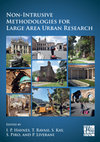
Non-Intrusive Methodologies for Large Area Urban Research, 2023
Rome Transformed has received funding from the European Research Council (ERC) under H2020-EU.1.1... more Rome Transformed has received funding from the European Research Council (ERC) under H2020-EU.1.1., the European Union's Horizon 2020 research and innovation programme (Grant agreement No.: 835271) i Contents Introduction ������������������������������������������������������������������������������������������������������������������������������� iii I. P. Haynes RT3D stratigraphies: analysis and software design to manage data ������������������������������������������1 V. Bologna, M. Azzari Roman buildings on the western slopes of the Capitol� Investigations and new approach technologies ��������������������������������������������������������������������������������������������������������������������������������4 E. Bianchi, A. Pansini Combining past, present, and future� Non-invasive mapping for the urban archaeology of Ascoli Piceno (Italy) ���������������������������������������������������������������������������������������������������������������������9 F. Boschi, E. Giorgi, M. Silani SOS project: a new challenge for a novel approach to the understanding of an important historical city ����������������������������������������������������������������������������������������������������������������������������16
The use of geophysical prospection methods in archaeology, 2019
Schmidt, A. 2007. Archaeology, magnetic methods. In D. Gubbins and E. Herrero-Bervera (eds) Encyclopedia of Geomagnetism and Paleomagnetism. Heidelberg, New York: Springer., 2007
Magnetic methods have become important tools for the scientific investigation of archaeological s... more Magnetic methods have become important tools for the scientific investigation of archaeological sites, with magnetic prospection surveys and archaeomagnetic dating being the most prominent ones. The principles behind these techniques were initially applied to larger and older features, for example prospecting for ore deposits (see Magnetic anomalies for geology and resources) or paleomagnetic dating (see Paleomagnetism). When these techniques were adapted for archaeological targets it was soon established that very different methodologies were required. Archaeological features are relatively small and buried at shallow depth, and the required dating accuracy is in the order of tens of years.
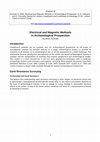
Schmidt, A. 2009. Electrical and Magnetic Methods in Archaeological Prospection. In S. Campana and S. Piro (eds) Seeing the Unseen. Geophysics and Landscape Archaeology: 67-81. London: Taylor & Francis Group., 2009
Geophysical methods are an essential tool for archaeological prospection on all scales of investi... more Geophysical methods are an essential tool for archaeological prospection on all scales of investigation: whether for detailed analysis of a single archaeological feature, to provide an overview of all features on an archaeological site, or for the assessment of a whole landscape. The relationship between geophysical measurements at the surface and buried archaeological features is complex and the interpretation of resulting data requires geophysical and archaeological insight. This chapter is a brief introduction to the two main geophysical techniques used in landscape archaeology, namely earth resistance and magnetic surveying. More detailed discussions have been published elsewhere (Clark 1990; Gaffney & Gater 2003; Schmidt 2007; Scollar et al. 1990) and current research is mainly made available through the journal Archaeological Prospection.
Papers (main) by Armin Schmidt
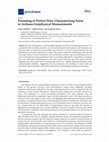
Geosciences, 2020
For the interpretation of archaeological geophysical data as archaeological features, it is essen... more For the interpretation of archaeological geophysical data as archaeological features, it is essential that the recorded anomalies can be clearly delineated and analyzed, and therefore, care has been taken to obtain the best possible data. However, as with all measurements, data are degraded by unwanted components, or noise. This review clarifies the terminology, discusses the four major sources of noise (instrument, use of instrument, external, soil), and demonstrates how it can be characterized using geostatistical and wavenumber methods. It is important to recognize that even with improved instruments, some noise sources, like soil noise, may persist and that degraded data may be the result of unexpected sources, for example, global positioning system synchronization problems. Suggestions for the evaluation and recording of noise levels are provided to allow estimation of the limit of detection for archaeological geophysical anomalies.
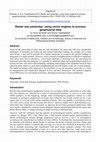
Tools for the processing of raster data are well developed, but noisy data still pose considerabl... more Tools for the processing of raster data are well developed, but noisy data still pose considerable challenges. If anomalies are broken up into isolated individual readings, for example due to high noise levels, it may still be possible for a human interpreter to recognize the isolated readings as being part of a single anomaly. However, such a concept of neighbourhood is difficult to implement with raster tools and an alternative, vector-based approach is presented here. By converting the measured raster data into polygons, it is possible to undertake shape and neighbourhood analysis to process the data. This allows discriminating, reshaping and merging of the anomalies based on their spatial location relative to each other (neighbourhood) and with respect to the size of each anomaly. The added advantage of this approach is the possibility to use the processed vector data as a basis for interpretation and visualization diagrams in two- and three dimensions. This method is applied to the GPR survey of a necropolis at Pessinus, showing several types of grave monuments.
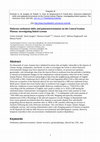
Schmidt, A., M. Quigley, M. Fattahi, G. Azizi, M. Maghsoudi & H. Fazeli 2011. Holocene settlement shifts and palaeoenvironments on the Central Iranian Plateau: investigating linked systems. The Holocene 21(4): 583-595., 2011
For thousands of years, humans have inhabited locations that are highly vulnerable to the impacts... more For thousands of years, humans have inhabited locations that are highly vulnerable to the impacts of climate change, earthquakes, and floods. In order to investigate the extent to which Holocene environmental changes may have impacted on cultural evolution, we present new geologic, geomorphic, and chronologic data from the Qazvin Plain in northwest Iran that provides a backdrop of natural environmental changes for the simultaneous cultural dynamics observed on the Central Iranian Plateau. Well-resolved archaeological data from the neighbouring settlements of Zagheh (7170-6300 yr BP), Ghabristan (6215-4950 yr BP) and Sagzabad (4050-2350 yr BP) indicate that Holocene occupation of the Hajiarab alluvial fan was interrupted by a 900 year settlement hiatus. Multi-proxy climate data from nearby lakes in northwest Iran suggest a transition from arid early Holocene conditions to more humid middle Holocene conditions from ca. 7550-6750 yr BP, coinciding with the settlement of Zagheh, and a peak in aridity at ca. 4550 yr BP during the settlement hiatus. Palaeoseismic investigations indicate that large active fault systems in close proximity to the tell sites incurred a series of large (MW ~7.1) earthquakes with return periods of ~500-1000 years during human occupation of the tells. Mapping and optically stimulated luminescence (OSL) chronology of the alluvial sequences reveals changes in depositional style from coarse grained unconfined sheet flow deposits to proximal channel flow and distally prograding alluvial deposits sometime after ca. 8830 yr BP, possibly reflecting an increase in moisture following the early Holocene arid phase. The coincidence of major climate changes, earthquake activity, and varying sedimentation styles with changing patterns of human occupation on the Hajiarab fan indicate links between environmental and anthropogenic systems. However, temporal coincidence does not necessitate a fundamental causative dependency.

Quigley, M., M. Fattahi, R. Sohbati & A. Schmidt 2011. Palaeoseismicity and pottery: investigating earthquake and archaeological chronologies on the Hajiarab alluvial fan, Iran. Quaternary International 242(1): 185-195., 2011
For millennia, humans have lived in locations that are highly vulnerable to large earthquakes, of... more For millennia, humans have lived in locations that are highly vulnerable to large earthquakes, often out of strategic or cultural necessity and/or the proximity of these locations to resources necessary for survival. Despite the often catastrophic effects when large earthquakes occur, recent history reveals that human nature is to rebuild rather than relocate, implying that seismic activity is not a sufficient deterrent of population growth in tectonically vulnerable areas. In order to investigate whether this was the case for ancient civilizations, and thus perhaps a fundamental tenet of human behaviour, we develop a palaeo-earthquake history for the active Cheskin and Ipak Faults in northwestern Iran and compare this with the well-resolved archaeological history of the nearby ‘Sagzabad cluster’ settlements of Zagheh (7170-6300 yr BP), Ghabristan (6215-4950 yr BP) and Sagzabad (4050-2350 yr BP). By combining new geologic, geomorphic, and chronologic datasets, we reveal the presence of a fault-propagated anticline formed by large (MW ~6.5 to 7.0) earthquakes on a blind thrust fault that projects to seismogenic depth immediately beneath the Sagzabad cluster settlement sites. We estimate that large earthquakes with a return period of ~440-775 yrs occurred on the Cheskin and Ipak Faults during human occupation of the Sagzabad cluster. Gaussian cumulative distribution modelling indicates a >90% probability under most faulting scenarios that the energy release from these earthquakes would have been of sufficient magnitude to generate peak horizontal acceleration (PHA) values at the Sagzabad cluster in excess of likely threshold values for complete settlement destruction. Poisson modelling assuming a time-displacement repeating model for earthquake recurrence indicates a 66 (42) % probability of one (two) earthquakes that would generate PHA ≥ 0.25g occurring during occupation of Zagheh, a 79 (55) % probability for Ghabristan, and an 88 (65) % probability for Sagzabad. Despite the near certainty that the residents of these Holocene settlements experienced large destructive earthquakes, the near-continuous history of occupation at this area suggests that early humans were not apt to relocate in response to earthquake activity. Environmental (e.g., alluviation, stream channel avulsion, climate change), cultural and/or political factors may have been more important drivers of settlement shifts and abandonment at the Sagzabad cluster of Iran.
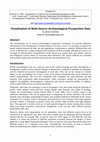
Schmidt, A. 2001. Visualisation of multi-source archaeological geophysics data. In M. Cucarzi and P. Conti (eds) Filtering, Optimisation and Modelling of Geophysical Data in Archaeological Prospecting: 149-160. Rome: Fondazione Ing. Carlo M. Lerici.
The simultaneous use of several archaeological prospection techniques can provide additional info... more The simultaneous use of several archaeological prospection techniques can provide additional information for the interpretation of buried features. For this to work, it is necessary to explore the spatial relation between the data sets and appropriate visualisation is required. Different data sets can be combined into a single compound that represents all data available, although the sources can no longer be differentiated. Using different visual classes (e.g. contour lines, grey shades, surfaces and orthogonal colours) allows to overcome these limitation. The various methods are evaluated with synthetic model data and field results from the Newstead Roman Fort.
A log-coffin excavated in the early nineteenth century proved to be well enough preserved in the ... more A log-coffin excavated in the early nineteenth century proved to be well enough preserved in the early twenty-first century for the full armoury of modern scientific investigation to give its occupants and contents new identity, new origins and a new date. In many ways the interpretation is much the same as before: a local big man buried looking out to sea. Modern analytical techniques can create a person more real, more human and more securely anchored in history. This research team shows how.
The ancient Sri Lankan city of Anuradhapura is currently the subject of one of the world's larges... more The ancient Sri Lankan city of Anuradhapura is currently the subject of one of the world's largest and most intensive archaeological research projects. Having traced its growth from an Iron Age village to a medieval city, the research team now moves to the task of modelling the surrounding landscape. Three seasons of fieldwork have located numerous sites of which the most prominent in the urban period are monasteries. Here is a clue about how the early urban hinterland was managed which has implications well beyond Sri Lanka.
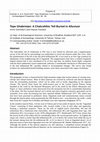
Schmidt, A. and H. Fazeli 2007. Tepe Ghabristan: A Chalcolithic Tell Buried in Alluvium. Archaeological Prospection 14(1): 38 - 46., Jan 1, 2007
The chalcolithic tell of Ghabristan in NW Iran is now buried by alluvium and a magnetometer surve... more The chalcolithic tell of Ghabristan in NW Iran is now buried by alluvium and a magnetometer survey of the tell and its surroundings was undertaken to reveal any features under this cover. After the abandonment of the tell in the late third millennium BC it was used as an Iron Age cemetery by inhabitants of the neighbouring tell of Sagzabad. The magnetometer data show a related irregularly shaped channel that is also considered to be of Iron Age date. Its shallow burial depth, compared with the thick sedimentary layers underneath, indicates a considerable slowdown of alluviation rates in the 2nd millennium BC, possibly related to environmental changes. The survey also found evidence for undisturbed buried building remains, most likely associated with copper workshops.



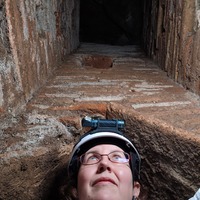


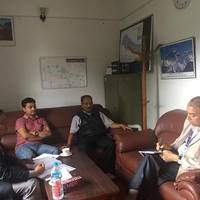



Uploads
Books by Armin Schmidt
The aim of these guidelines is to provide an overview of the issues to be considered when undertaking or commissioning geophysical survey in archaeology. As every project differs in its requirements (e.g. from fi nding sites to creating detailed maps of individual structures) and variations in geological and environmental conditions lead to different geophysical responses, there is no single ‘best’ survey technique or methodology. This guide, in its European approach, highlights the various questions to be asked before a survey is undertaken. It does not provide recipe book advice on how to do a geophysical survey or a tick list of which technique is suitable under what conditions: there is no substitute for consulting experienced archaeological geophysicists on these matters. Using geophysical techniques and methods inappropriately will lead to disappointment and may, ultimately, result in archaeologists not using them at all.
There is no formalised standard for the conduct of geophysical survey in archaeology, mainly because there are many parameters that determine the outcome, and there are various purposes for which the results may be used. A variety of geophysical techniques is available (e.g. magnetometer, earth resistance and ground penetrating radar (GPR) survey) and an archaeological geophysicist will chose a particular methodology for collecting data with any of these techniques (e.g. a gridded survey with a specific transect separation). The choices will depend on the archaeological questions being asked (whether broad, like “are there any archaeological features in this planned road corridor?” or detailed as in “is this wall foundation one brick wide or two?”). The following sections discuss the issues for consideration when selecting geophysical techniques and methodologies, but do not specify specific requirements as these will vary according to context.
Book sections by Armin Schmidt
Papers (main) by Armin Schmidt
The aim of these guidelines is to provide an overview of the issues to be considered when undertaking or commissioning geophysical survey in archaeology. As every project differs in its requirements (e.g. from fi nding sites to creating detailed maps of individual structures) and variations in geological and environmental conditions lead to different geophysical responses, there is no single ‘best’ survey technique or methodology. This guide, in its European approach, highlights the various questions to be asked before a survey is undertaken. It does not provide recipe book advice on how to do a geophysical survey or a tick list of which technique is suitable under what conditions: there is no substitute for consulting experienced archaeological geophysicists on these matters. Using geophysical techniques and methods inappropriately will lead to disappointment and may, ultimately, result in archaeologists not using them at all.
There is no formalised standard for the conduct of geophysical survey in archaeology, mainly because there are many parameters that determine the outcome, and there are various purposes for which the results may be used. A variety of geophysical techniques is available (e.g. magnetometer, earth resistance and ground penetrating radar (GPR) survey) and an archaeological geophysicist will chose a particular methodology for collecting data with any of these techniques (e.g. a gridded survey with a specific transect separation). The choices will depend on the archaeological questions being asked (whether broad, like “are there any archaeological features in this planned road corridor?” or detailed as in “is this wall foundation one brick wide or two?”). The following sections discuss the issues for consideration when selecting geophysical techniques and methodologies, but do not specify specific requirements as these will vary according to context.
Ground Penetrating Radar (GPR) is shown to produce good quality images of dry cave deposits and underlying limestone cave floors. The GPR images show the sedimentological and archaeological distribution of the cave-fill, identify buried ‘houses’ and allow the mostly buried cave floor to be mapped. GPR and ground resistivity images are combined with a Total Station survey of cave topography in a 3D Computer Aided Design (CAD) model. By combining the several lines of evidence within the model, the cave floor is mapped. Further analysis of the CAD model is used to address geological, speleological and archaeological issues.
A follow-up data acquisition program could now be designed to improve the extent and quality of the GPR imagery in order to answer specific questions. Based upon this investigation and recent literature, the oldest deposits, within the Vestibule cave fill, are predicted to be located at the highest level. A 3D-GPR survey is recommended to define the stratigraphy of any lateral accretion surfaces within the cave fill and the effects of human activity in partially remodelling them.
There is no formalised standard for the conduct of geophysical survey in archaeology, mainly because there are many parameters that determine the outcome, and there are various purposes for which the results may be used. A variety of geophysical techniques is available (e.g. magnetometer, earth resistance and ground penetrating radar (GPR) survey) and an archaeological geophysicist will chose a particular methodology for collecting data with any of these techniques (e.g. a gridded survey with a specific transect separation). The choices will depend on the archaeological questions being asked (whether broad, like “are there any archaeological features in this planned road corridor?” or detailed as in “is this wall foundation one brick wide or two?”). The following sections discuss the issues for consideration when selecting geophysical techniques and methodologies, but do not specify specific requirements as these will vary according to context.
The geophysical survey work in the Rievaulx area in North Yorkshire, England has examined iron-working activity ranging from a bloomery site to a blast furnace with a finery/chafery complex. Geophysical surveys were undertaken on eight sites to measure magnetic anomalies, magnetic susceptibility and earth resistance. One geophysically surveyed bloomery site was subsequently excavated.
The geophysical interpretations can be compared with the historical evidence. Cistercian monks from Rievaulx Abbey operated several of the sites surveyed. After the dissolution of the Abbey in 1538, iron-making continued under the Duke of Rutland, who constructed a charcoal-fired furnace at Rievaulx in ca. 1570. The geophysical work has led to a reassessment of the use of water-power, which was associated with two finery/chafery complexes in the Rievaulx area.
Most of the surveys have identified iron-working features that can be matched to topographic changes. The paper covers the results from some of the Rievaulx surveys and details the types of feature than can be identified, including furnace sites, buildings, leats and slag tips.